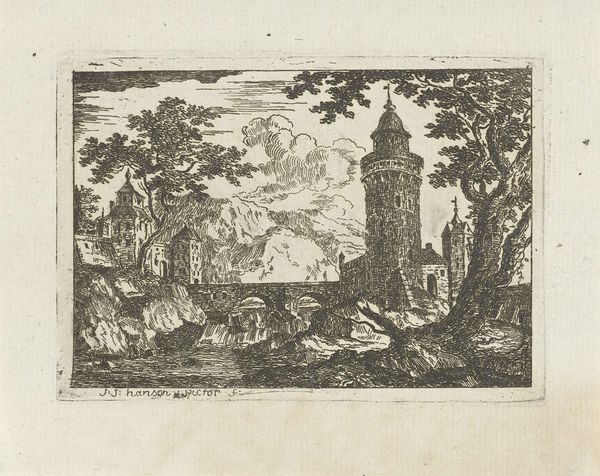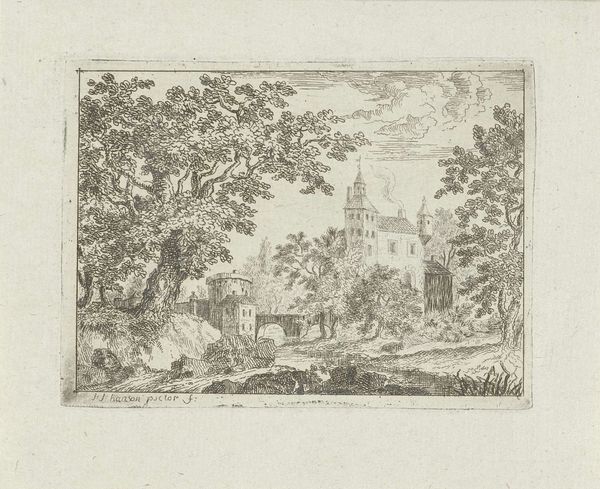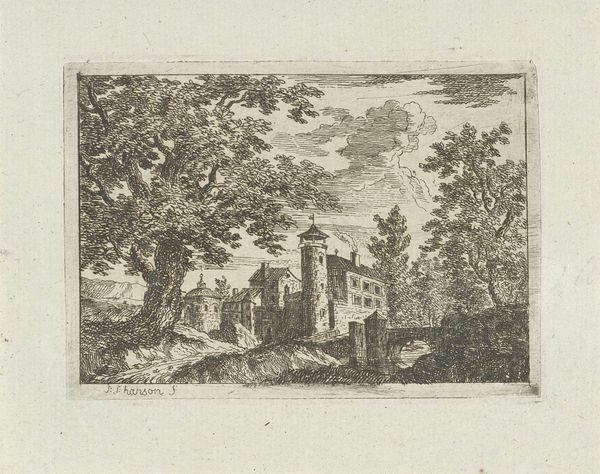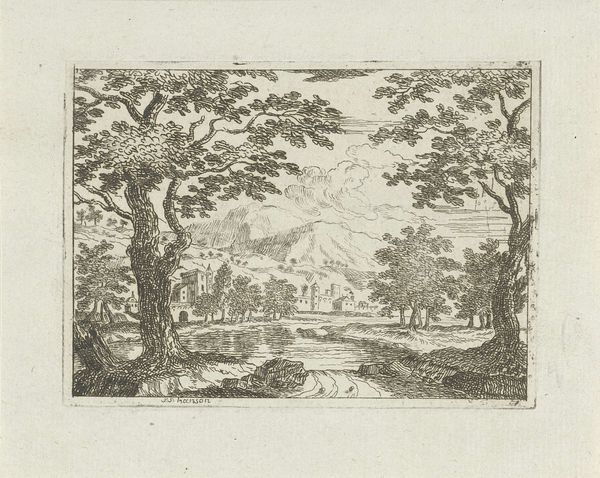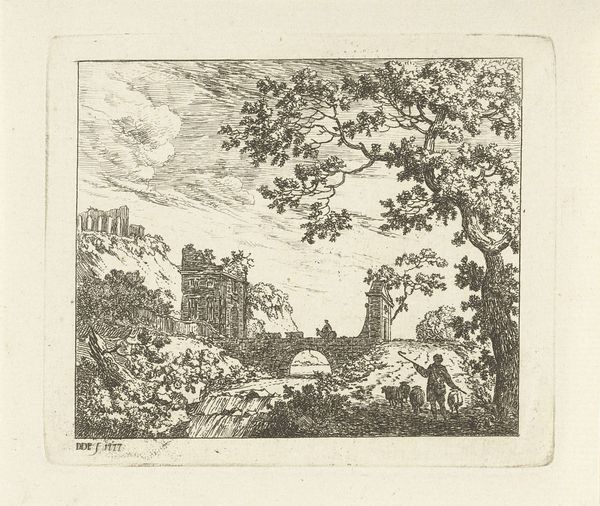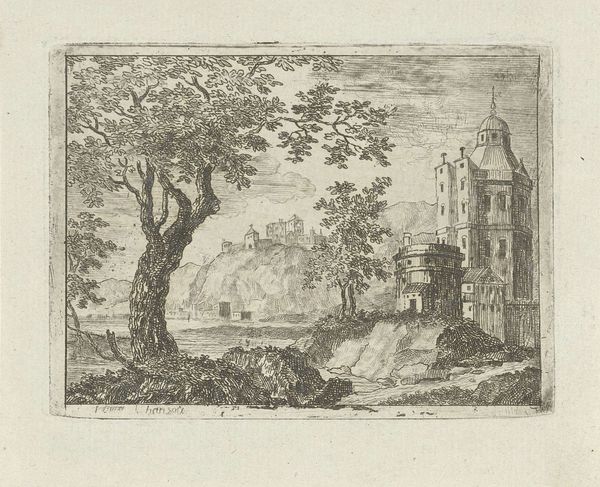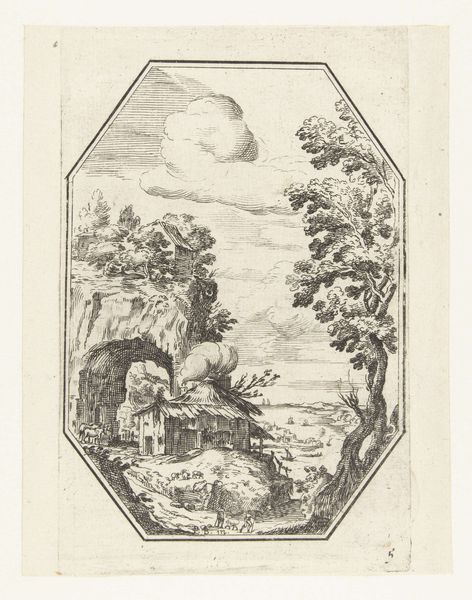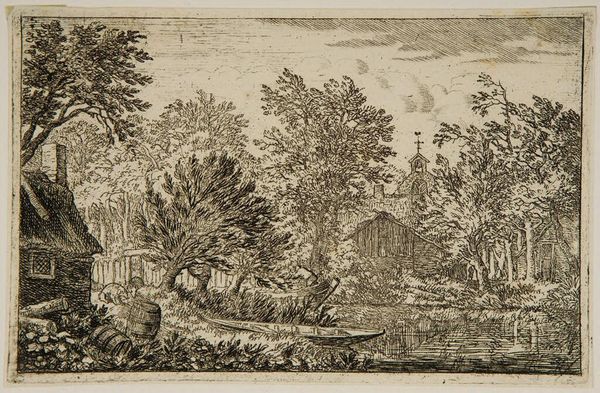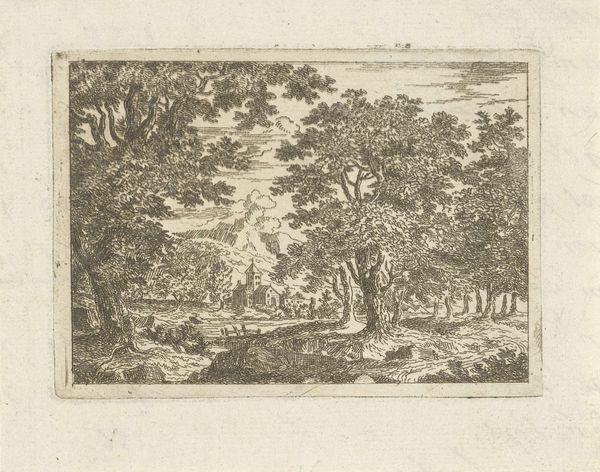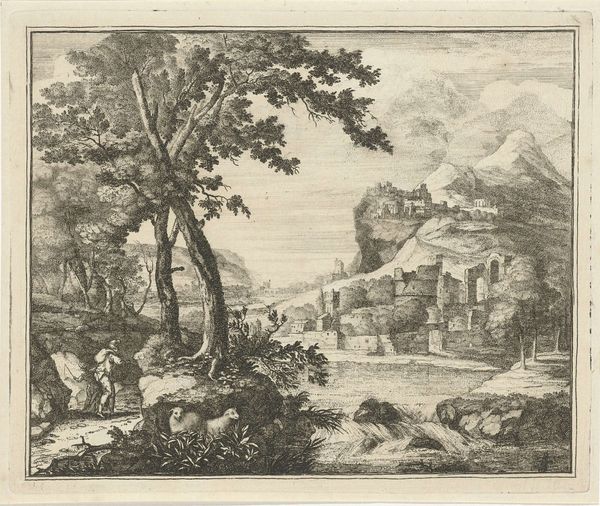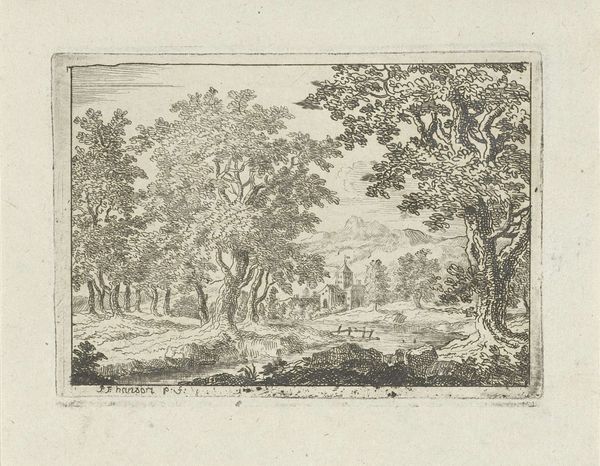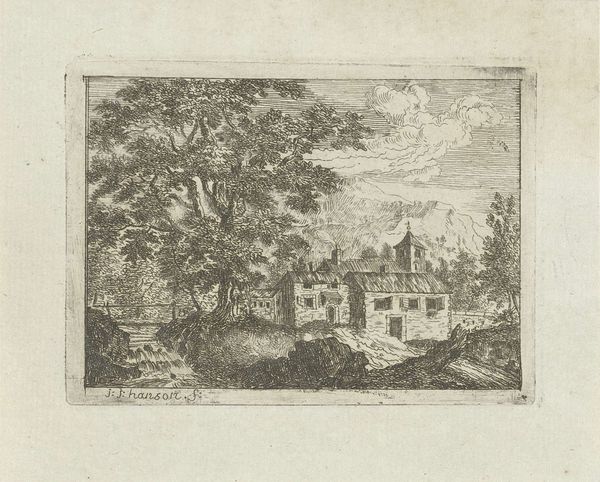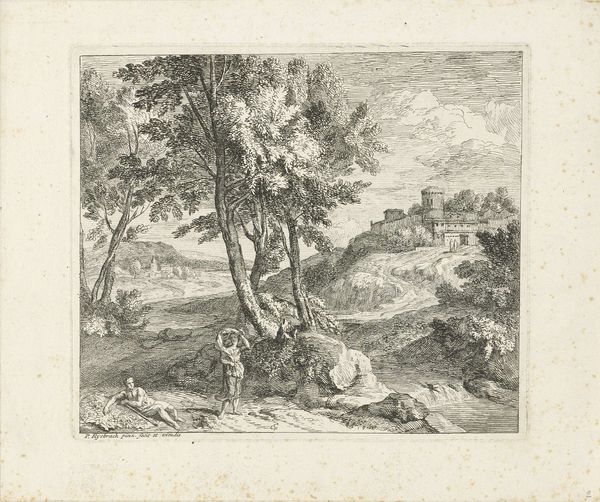
Dimensions: height 73 mm, width 103 mm
Copyright: Rijks Museum: Open Domain
Editor: Here we have Jean Joseph Hanson’s “Stenen gebouwen aan een rivier,” created sometime between 1741 and 1799. It’s a cityscape done as an engraving, giving it this very detailed, linear feel. What really stands out to me is how the buildings seem so permanent against the backdrop of the natural landscape. How do you interpret the scene? Curator: The enduring quality of stone is powerfully contrasted with the river's constant flow. Buildings as archetypes recur in our visual vocabulary again and again. Note the architecture; doesn't it evoke a kind of defiant romanticism? Editor: Defiant how? It looks quite peaceful, actually. Curator: The tower on the left, the aqueduct… They almost assert themselves against the wildness of the mountains. As though civilization is always striving to master nature, leaving its mark. It reminds me of those baroque stage designs. Editor: Oh, I see! Like humanity's ambitions etched onto the landscape. So even though it's just a picture of some buildings, it speaks to something much bigger? Curator: Exactly! And that desire to leave one's mark resonates through art history. Don't you think the artist seems to say that stone buildings become more than stone? Editor: Yes! Thinking about it that way gives this simple cityscape so much more depth. I really appreciate that new perspective! Curator: The delight is all mine. Discovering how images accumulate layers of meaning across centuries is thrilling, isn't it?
Comments
No comments
Be the first to comment and join the conversation on the ultimate creative platform.
